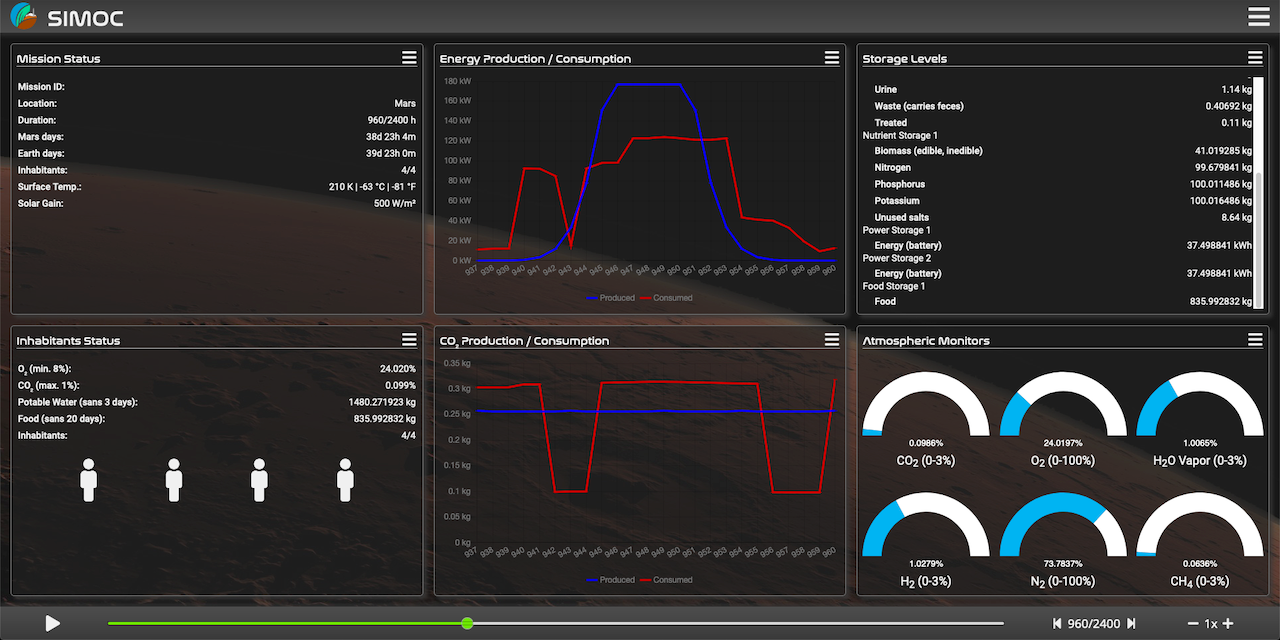
June 2019 – May 2020
This one year development cycle was driven by the persistent goal of launching SIMOC at the National Geographic Education Resource Library. To do so meant taking a complex system built principally for a single workstation or laptop and redesigning the back-end server and server-to-browser communications for reliable, scalable deployment across a cloud computing platform. While we had in Phase IIIa employed Docker containers for rapid installation, taking SIMOC install to cloud computing invoked another layer of sophistication.
No longer held to the timeline of quarterly updates and presentations at the Arizona State University Interplanetary Initiative, we worked toward a series of phased releases for review by colleagues and partners at the University of Arizona’s Controlled Environment Agriculture Center, Biosphere 2, NASA, Paragon Space Development Corporation, and National Geographic. In October of 2019 we provided access to a beta version for a handful of teachers who work with National Geographic to test and provide feedback for new educational software packages. Each took SIMOC into their classroom and engaged their students in the design and test of a habitat on Mars. Their feedback was well aligned with our own design goals, reinforcing our priorities for how to improve the web-based, citizen science experience.
From December of 2019 through April we continued to fine tune both the back-end server and front-end interface, and the means by which they communicate. On the server the driving factors were reaching for higher fidelity, scalability, and reliability with a model whose agent interactions more closely matched those of the real world actors they simulated. In addition, we added customized configuration, dashboard panel layout, and download/upload of full data such that the results of a complete simulation may be re-loaded or shared in a fraction of the original simulation time.
As with all computer software development efforts, we implemented section re-writes when we were suppose to move to code freeze, discovered ways to improve performance, and after seemingly endless battles with complex bugs, found success. SIMOC will never be done, but with each phase of development, it will become more than we had originally imagined.
Phase IIIb development saw code freeze with the close of April, two weeks testing with the National Geographic review panel, and launch June 1, 2020 through the National Geographic Education Resource library.

